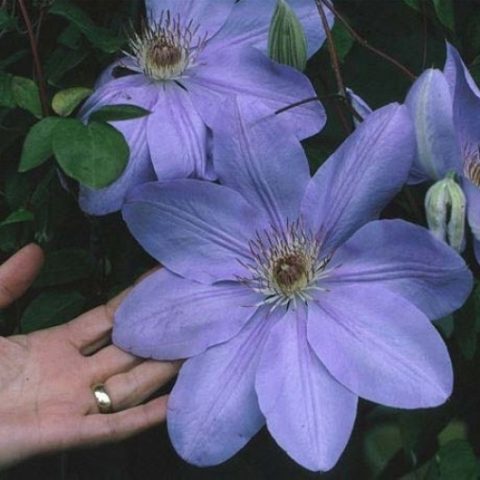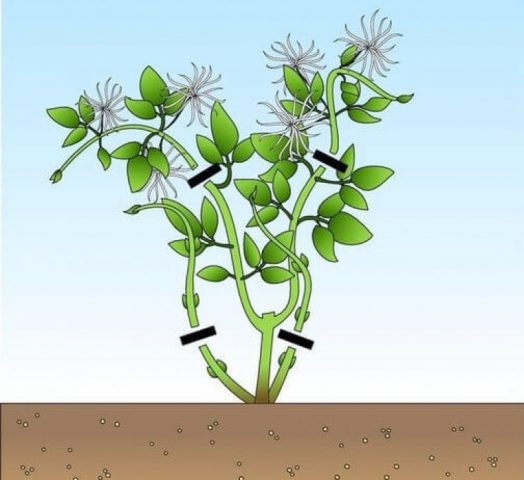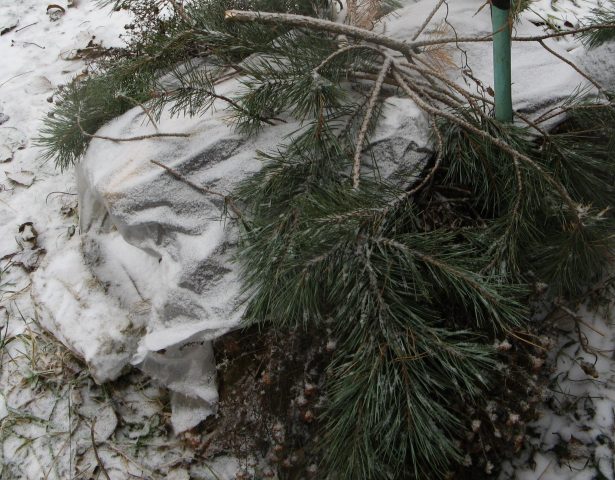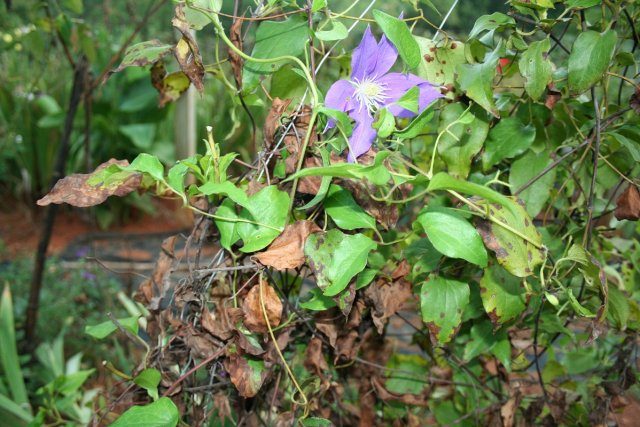Content
An ornamental plant, perennial with a long flowering period - clematis Mrs. Cholmondeli. The main advantage of the variety is abundant, continuous flowering from May to August. Thanks to the large lilac flowers, the culture looks great among the evergreen and deciduous inhabitants of the garden, against the background of yellow flowers.
Mrs. Cholmondeli's Clematis Description
The hybrid is unpretentious, blooms profusely, looks very picturesque. The shrub belongs to the group of lianas, winds well over natural and artificial supports. This is a lush plant, in height with the correct garter, it can grow up to 3-3.5 m.
In the description and in the photo, you can see that the clematis flowers of Mrs. Cholmondeli are large, in diameter they can reach 25 cm.The color of the buds is lilac, light blue, lavender, lilac. The middle of the flower is filled with small, yellow and light brown, velvety, even stamens. Flowers on young shoots are simple, on shoots older than a year - semi-double.
The leaves of the Mrs. Cholmondeli shrub are small, no more than 5 cm long and 2 cm wide, oblong, pointed, smooth along the edges, light green in color.
Mrs. Cholmondeli's Clematis Pruning Group
With the help of pruning, they regulate the flowering time of a given variety. With a weak pruning of the 2nd type, the culture throws out buds from May to August. With strong pruning of the 3rd type, Mrs. Cholmondeli's clematis blooms from July to September. In both cases, flowering will be abundant and long lasting. Mrs. Cholmondeli's shrub is a fast-growing hybrid that recovers within a month after pruning.
Planting and caring for Mrs. Cholmondeli's clematis
The plant is planted in April or late September. Before planting, it is necessary to prepare a place where Clematis hybrid Mrs. Cholmondeli will grow. It can be a sunny meadow or a place near any hedge - the shrub grows well and develops in the sun and in partial shade.
Before planting, the roots of the plant are soaked in water for half an hour. At this time, the soil is dug up, fertilizers are applied to it. A nutritious soil mixture is prepared from earth, sand, humus and wood ash. All components are taken equally.
Dig a hole, its depth should accommodate the entire clematis root, fertilizer layer and root collar. At the bottom of the pit, a prepared soil mixture is poured with a mound, a root is placed on top of it, straightening all its processes. The root collar should be below the soil level. This will protect it from freezing. Sprinkle the root with fluffy soil on top, tamp it.
After planting, the bush needs abundant watering, and it should also be protected from direct sunlight. Moistened soil is mulched with sawdust or hay.
Clematis care is simple. The culture is watered, the soil is loosened, shoots are cut off, and weeds are regularly removed. Water the plant sparingly, but regularly, as the soil dries.
In the first year after planting, the culture does not need fertilizers. Then they adhere to the following schedule:
- The next year, during the growth period before the buds appear, nitrogen fertilizers are applied.
- During the period of the appearance of inflorescences, the hybrid of Mrs. Cholmondeli is fed with any complex fertilizer.
- After the flowers have fallen off and growth is complete, at the end of August, potash and phosphorus fertilizers are applied.
The buds of clematis in the first year of life are removed. This stimulates profuse flowering afterwards. To develop lateral shoots, pinch the top of the bush.
Pruning is carried out in the first year of growth. In autumn, all shoots are shortened, leaving a central stem up to half a meter long.
An adult plant older than a year is pruned in the fall, with the arrival of cold weather. First, all dry, diseased, damaged parts are removed. Afterwards, a shaping pruning is carried out. A universal way of pruning for all clematis: cut off only the top of one shoot, leave the next one no more than 15 cm long.This procedure allows you to rejuvenate the shrub, stimulate uniform flowering and growth of lateral shoots in spring.
Preparing for winter
Before sheltering Mrs. Cholmondeli's hybrid for the winter, it is protected from fungal diseases. The soil under the bush and around it within a radius of 1.5-2 m is treated with liquid solutions of fungicides, sprinkled on top with a small layer of wood ash. Then they start covering work.
As soon as night frosts appear in the fall, Mrs. Cholmondeli's hybrid is sheltered for the winter. The main stem is spud with peat or garden soil at the base. The height of the protective mound must not fall below 15 cm from the ground. This will protect the stem and root of the plant from night, autumn frosts.
As soon as the air temperature drops below 0 ° C, the shoots should be protected from frost. First, the area around the bush is lined with spruce, hay or dry tree branches. Clematis is removed from the support and lowered to the ground so that it lies on the plant substrate. Long shoots are twisted neatly. Then the plant is wrapped with a covering material: tar, reinforced or bubbled plastic wrap, agrofibre. A layer of earth, branches, dry leaves is thrown on top of the structure. The last layer is again roofing material or roofing felt.
As soon as the first snow falls, it is thrown onto a covering hill. This is additional protection for Mrs. Cholmondeli's hybrid from frost and wind.
Reproduction
Clematis is simply and quickly propagated by dividing the bush in early spring or autumn. Choose a strong, well-developed shrub over 5 years old. It is dug up by the root, several children with 2-3 buds are separated with a shovel. They are planted as independent plants.
Diseases and pests
The well-developed root system of Mrs. Cholmondeli's clematis, which is located deep in the ground, is susceptible to fungal diseases, including wilting.
For prevention, they regulate the frequency of watering, prevent stagnation of water at the root. This disease is inherent in all hybrid clematis. Also, Mrs. Cholmondeli's bush can be affected by gray mold, powdery mildew, rust.
Aphids, spider mites, slugs attack stems and leaves of Mrs. Cholmondeli's clematis. At the first appearance of insects, the shrub is sprayed with insecticide solutions.
Conclusion
Clematis Mrs. Cholmondelli is a beautiful ornamental plant that adapts even in the harshest climates. Subject to the technique of planting and leaving, problems with its cultivation will not arise. Prolonged flowering of the culture from May to September is a great reason to root it in your personal plot.
Testimonials













